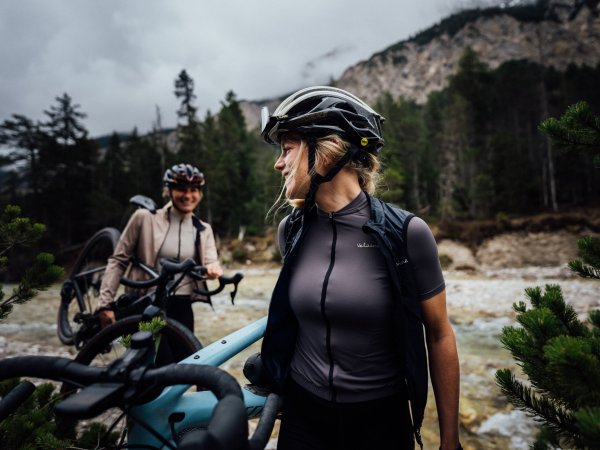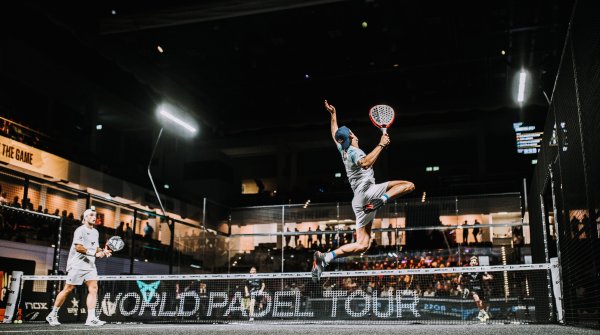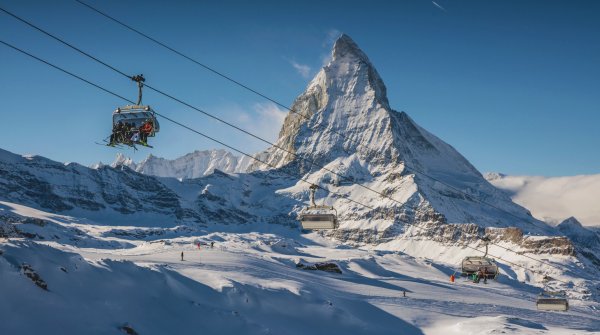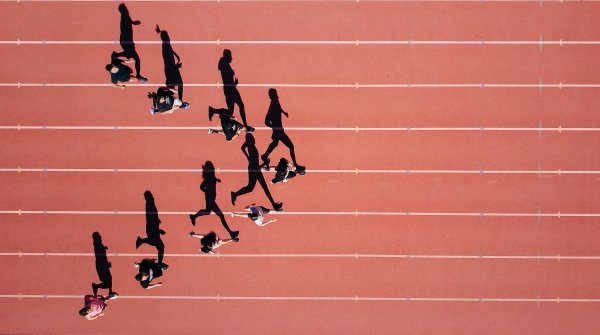The world is becoming entangled in polycrises. As a result, many people are longing for positive personal experiences. Sport and travel are very popular as a balance and distraction from everyday life - especially after the years of privation and isolation caused by the pandemic. Now the opposite is happening: communities are in demand and sport in the community. Many need variety, want to discover new things and experience "once in a lifetime" moments: Adventure trips, caravanning, bikepacking and long-distance hikes are very popular. At the Sports Travel Hub at ISPO Munich 2023, these trends were lectured on and discussed for three days - and the meaningful synergies between the sports industry and tourism were considered. This is because brands can benefit massively from the increasing popularity of combining sport and travel, as consultant Maurici Carbó reports. He expects an average annual growth rate of 17.5% from 2023 to 2030. Europe is the largest market in terms of revenue share with 38%. "People want to actively shape their vacations - whether young or old," says Carbó. We present future-oriented partnerships, show how hotels are adapting to some sports trends and which tourism sectors have a long-term agenda.
Many brands from the endurance sector have recognized how important and essential partnerships are. For the success of the companies themselves, but also for the experience of the community. The US manufacturer of running shoes and running apparel Brooks is a player in the market that doesn't stand still. Otherwise, it would certainly not be able to look back on 110 years of company history today. Brooks has been cooperating with Strava - a fitness tracking app for runners and cyclists - for some time now. The reason is simple. "We monitor around one million active runners every month in the Brooks community alone. That's huge potential," emphasizes Evelina Jarbin, responsible for brand partnerships at Strava. "It is therefore a matter of course for us to be active there and offer something to the athletes," explains Lara Hasagic, Marketing Director (DACH) at Brooks.
The running product manufacturer succeeded in doing just that with the market launch of its Run Visible collection. Via Strava, wildcards gave them the chance to take part in this launch event on the island of Usedom together with over 30 influencers and brand ambassadors from Germany, Austria and Switzerland. Good for the sporting goods manufacturer, as the running-enthusiastic influencers reported on the campaign and the new products on their social media accounts with a wide reach and high visibility. The island of Usedom also benefited from the cooperation, as together with the Mecklenburg-Vorpommern Tourist Board, it was able to present itself as a running paradise and bring the island's diverse charm to life. Engagement with Strava, greater awareness of Brooks and an increase in bed bookings on Usedom - a win-win situation for all three players.
In the cycling community, Strava partnerships with brands from the clothing industry have been working successfully for many years. Rewards and vouchers are unlocked by uploading activities. The British label Rapha and Maap from Australia began intensifying their community relationship years ago. Cycling for discounts! This even works virtually. True to the motto "Performance pays off", you can have your virtual jersey unlocked using an indoor smart trainer on Zwift and show the community the reward for past efforts. After all, recognition is also important in sport. And just like in the running community, travel regions are now also discovering this partnership potential. "Becoming a Flandrien" is the name of a creative project from Belgium, presented by Dries Verclyte, Product Manager at Visit Flanders. Anyone who conquers the famous 59 iconic mountain and cobblestone passages in Flanders within 72 hours will become part of the cycling legend. Strava segments as travel inspiration. The reward is a cobblestone engraved with your name, which is given a place on the real Wall of Fame in the Ronde Van Vlaanderen Center in Oudenaarde. All the more reason to travel to the place dedicated to the gods of cycling.
Resorts and hotels are currently paying more attention to the yoga sector and are responding to the increasing demand. A fitness room with mostly outdated equipment is no longer enough. People also want space for meditation, yoga and stretching. Roll out the mat and say "Namaste"! Another remarkable development is the spillover from the padel scene into tourism. Padel is growing incredibly fast. There are currently more padel players in Spain than in tennis. The hotel industry has not missed the boom either and is adapting to it. New padel courts are being built or existing tennis courts are being converted. This is because the padel community is staying longer, traveling in larger groups and venues for tournaments are gaining in importance. The signs are pointing to growth.
In the Alpine region, new growth opportunities are being seen in destination management. The fact that vacation regions work together with various sports associations and present their presence at competitions on television in a way that is suitable for the masses is nothing new. Working with ambassadors to highlight the benefits of a region has also been common practice for a number of years. What is new, however, is that otherwise competing vacation regions are joining forces. In Tyrol, South Tyrol and Trentino, this works very well with the UCI professional cycling race Tour of the Alps. Until 2016, this cycling race was still called the Giro del Trentino, but it was then decided to expand it with new stages and routes in South Tyrol and beyond the main Alpine ridge in Tyrol. The three regions are closely linked by their identity and share common values. With the same vision and idea of cycling, they have created the Tour of the Alps. The race in April is seen as a good preparation for the Giro d'Italia - with a clear concept: short but challenging stages and as few transfers as possible. David Evangelista, Head of Communication for the Tour of the Alps, explains the advantages: "The start and finish are in one place for many stages. This means fewer emissions, less travel stress for the riders and more time for recovery. This benefits everyone, the professionals and the spectators."
These examples show how tourism regions can benefit from sport through innovative marketing. Other traditional sports regions, on the other hand, are struggling to attract guests. Some winter sports resorts are worried and in some cases are already under enormous pressure. Customers are staying away, everything is becoming more expensive and the season is being shortened due to climate change. Winter sports enthusiasts who can afford it are traveling to more expensive, snow-sure areas.
However, price points and accessibility are aspects that increasingly speak against practicing winter sports. This is the result of a recent study presented in part by Prof. Dr. Ralf Roth from the German Sport University at the Sports Travel Hub of ISPO Munich 2023. There has been a decline on the slopes, particularly among 25 to 35-year-olds, compared to the demographic age distribution. Skiing has always been expensive, but prices have continued to skyrocket in recent years. Rath warns: "You have to be seriously careful here that you don't end up losing the next generation. Why can't every child have access to cross-country and alpine skiing in the Allgäu, for example?"
The rising prices are also a reason why more and more winter sports enthusiasts are turning to other activities during their vacation. Ski tours, tobogganing or snow hikes - 7 days of skiing in a row are no longer a matter of course. There is no shortage of alternatives here. The situation is quite different when it comes to travel, which still accounts for the largest share of CO2-footprint that most ski tourists leave behind in the snow. There is often a lack of seriously attractive public transport options that connect the cities with the ski resorts as an alternative to traveling by car. Cooperation and partnerships between ski resorts, local and long-distance public transport, cities and municipalities are major tasks for the coming years. This could also improve the image of ski tourism in the long term.
Why is the connection between sports and tourism significant?
The connection between sports and tourism provides a welcome break and distraction from everyday life, especially after the isolating pandemic years. People seek positive experiences and new adventures, leading to the popularity of trends like adventure travel, caravanning, and long-distance hiking.
How can businesses benefit from partnerships in tourism?
Partnerships, such as the one between Brooks and Strava, allow businesses to increase their brand presence and actively engage with their target audience. By collaborating with travel destinations, companies like Brooks can promote both their products and the holiday destination, thus benefiting from the growing popularity of active vacations.
What role do rewards play in the sports community?
Rewards, such as discounts and vouchers, are used in the sports community as incentives for activities. Platforms like Strava offer rewards for athletic achievements, increasing community motivation and fostering cohesion.
How are hotels adapting to sports and wellness trends?
Hotels are responding to the growing demand for sports activities and wellness offerings by adapting their facilities accordingly. In addition to fitness rooms, they now also provide space for yoga, meditation, and other activities. Furthermore, hotels recognize the trend towards sports like paddle tennis and are expanding their facilities accordingly.
What are the benefits of joint events by tourism regions?
Joint events, such as the Tour of the Alps, offer tourism regions the opportunity to strengthen their identity and attractiveness. Through collaboration, they can reach a larger audience and benefit from joint marketing efforts, leading to growth in tourism for the region.

 Sports BusinessSki Mountaineering Goes Olympic: What Milano-Cortina 2026 Means
Sports BusinessSki Mountaineering Goes Olympic: What Milano-Cortina 2026 Means
- ISPO awards
- Mountain sports
- Bike
- Design
- Retail
- Fitness
- Health
- ISPO Job Market
- ISPO Munich
- ISPO Shanghai
- Running
- Brands
- Sustainability
- Olympia
- OutDoor
- Promotion
- Sports Business
- ISPO Textrends
- Triathlon
- Water sports
- Winter sports
- eSports
- SportsTech
- OutDoor by ISPO
- Heroes
- Transformation
- Sport Fashion
- Urban Culture
- Challenges of a CEO
- Trade fairs
- Sports
- Find the Balance
- Product reviews
- Newsletter Exclusive Area
- Magazine







